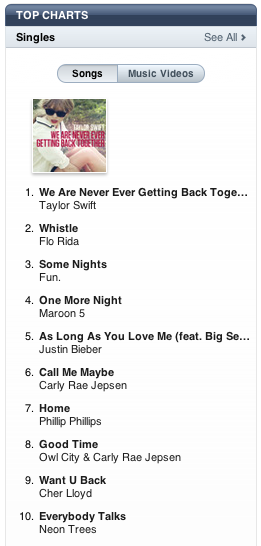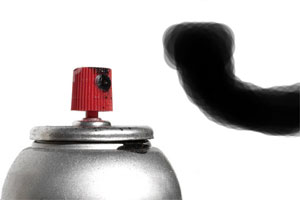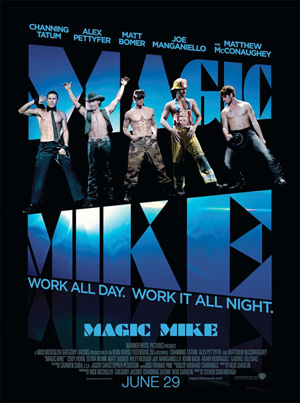 Are today’s teenagers engaging in more risky behaviors than before?
Are today’s teenagers engaging in more risky behaviors than before?
The Center for Disease Control and Prevention (CDC) actually produces a bi-annual report that looks for these answers, analyzing teenage risky behaviors like sexual activity, smoking, drinking, fighting, driving without seatbelts, etc. Last week their brand new report with 2011 numbers was released.
Want to know the bottom line?
Good luck. It really depends whose headlines you read. The CDC press release about the report is actually titled, U.S. High School Students Improve Motor Vehicle-related Health Behaviors. And sure enough, more kids are wearing seatbelts, less are drinking and driving, or riding with a driver who has been drinking. But are those the main risky behaviors teenagers are engaging in?
What risky behaviors concern you? Last night my daughter Alyssa began asking me random questions off a questionnaire on her Pinterest page, questions like: What are your 3 biggest fears? or What makes you happy? What started as just Alyssa and I, ended up being my entire family laying around the couch answering Alyssa’s questions. Ashley, my 14-year-old caught my attention with one of her answers to, “What makes you happy?” One of Ashley’s answers was, “When I’m doing something crazy!”
I was a little nervous until she started expanding on her answer, talking about more extreme sport type activities. I guess everyone has different definitions of “risky” or “crazy.”
3 Risky Behaviors:
When I read the report, I immediately was curious about three risky behaviors that I see affecting teenagers for the long-haul: marijuana use, drinking, and sexual activity. I’m not minimizing risky behaviors like bringing a weapon to school or even using hallucinogenic drugs. It’s just that in my 20 years of youth ministry, I’ve seen more pain, heartache and natural consequences from these three risky behaviors on mainstream teenagers than any others.
Here’s what this newest CDC report had to say about these three areas:
Sexual Activity:
Contrary to what the headlines have been saying the last six months, teenage sexual activity is up a notch.
Some of you might remember me bringing some headlines to your attention last October. In October the CDC released another report titled the National Survey of Family Growth (NSFG) report, revealing that only about 42% of American teenagers have had sex. Headlines immediately appeared claiming Young People Are Having Less Sex!
Is this true?
Unfortunately…not in the last decade.
Many of you probably remember a Youth Culture Window article I wrote titled, “Are Teenagers Really Having Less Sex?” In that article I cited other reports, including CDC’s past Youth Risk Behavior Reports, showing you a nice little chart revealing a decline from 1988 to 2001, then a “leveling off” since then. I told my co-workers. “Let’s wait until the new Youth Risk Behavior Report comes out from the CDC and we’ll see if teenage sexual activity is down.”
Well, the report came out last week, and the numbers aren’t down. The sexual activity headlines should basically be, “Almost Half of High School Students Having Sex.” Here’s a glimpse at these new numbers (the new 2012 report reveals 2011 numbers) compared to the last report two years ago (with 2009 numbers)

Download the entire report to see the breakdown of all grades, races and geographic locations for several different categories of sexual behaviors.
NOTE: The “confidence interval” that the CDC puts on this report is 95%. So these changes of 1% or so really aren’t statistically significant.
So basically, risky sexual behaviors haven’t really gone up or down. But hopefully the little bump up in numbers will at least silence the headlines that are claiming, “Teens are having less sex!” How come we don’t see a headline stating, 63% of teenagers will have sex by the time they walk across the stage to collect their high school diploma?
Marijuana Use:
Up a little more than a notch.
In short, the total amount of H.S. students who ever used marijuana in 2009 was 36.8%. The 2011 number is 39.9%. But that’s just the young people who have ever tried it even once. How about current users- a number that reveals who has had marijuana even 30 days before the survey, usually indicating regular use. In 2009 this number was 20.8% for all H.S. students. In 2011 current users were 23.1%.
Yes, according to this report, sadly, almost 1/4th of H.S. students are using marijuana regularly. Other reputable reports showed even higher numbers than this. Last month the Partnership at Drugfree.org released a report revealing that 27% of H.S. students are “past-month” users of marijuana.
So somewhere between 23 and 27 percent of high school students are regular users. This isn’t good news. (Will we see that press release?)
Drinking:
Down a notch.
Drinking numbers are always interesting. CDC tracks “ever drank alcohol,” “current alcohol user,” and “binge drinking.” I don’t even pay attention to the “ever drank alcohol” numbers. After all, many parents will let their kid try a sip of wine at a wedding. Does that mean that kid is engaging in risky behaviors? Not even close. It just means that they’re Presbyterian!
In 2009 a total of 41.8% of high school students were “current users” (had a drink in the 30 days before the survey). Interestingly enough, that was 42.9% of females compared to 40.8% of males. In 2011 the number of current users dropped to 38.7% of high school students, with the genders flip-flopping— 37.9% of females and 39.5% of males.
In 2009, 24.2% of high school students currently engaged in binge drinking (5 or more drinks within a couple of hours within at least 30 days before the survey). Males were higher than females. In 2011 the number of high school students’ binge drinking shrank to 21.9% (males still higher than females).
The drop in overall current users of alcohol is statistically insignificant, but the drop in female current users is noteworthy (5%). The drop in binge drinking is also notable (over 2%).
I’m glad to see these numbers down a notch, although it’s hard for me celebrate when 4 out of every 10 high school students is a current drinker, and 1 in 5 is a binge drinker.
Drinking is one of those risky behaviors that have dire consequences. One Rutgers study following 437 young women from high school graduation through their freshman year of college, found two scary truths:
- Out of the young women who never drank heavily in high school (if at all), nearly half admitted to binge drinking at least once by the end of their first college semester.
- Of all the women whose biggest binge had included four to six drinks (5 drinks in one sitting is the definition for binge drinking), one quarter said they’d been sexually victimized in the fall semester (anything from unwanted contact to rape). Those women who ever consumed 10 or more drinks, 59% were sexually victimized by the end of their first semester.
I wonder if these girls think Katy Perry’s song, Last Friday Night is funny?
Drinking, Marijuana use and sexual activity are three behaviors that large percentages of our kids are engaging in… and they are facing the consequences.
What about you?
Are you talking with young people enough about decision making in these areas?
How can you engage young people in conversations, not lectures, about these areas?
 People have described me as “edgy” at times when I speak, because I’m not afraid to talk about the uncensored truth. I’ve even offended a handful of ultra-conservative individuals when I shared my talk, “Sex Isn’t Naughty,” using scriptures like Proverbs 5:18-20 to teach the unedited truth about God’s design for sex.
People have described me as “edgy” at times when I speak, because I’m not afraid to talk about the uncensored truth. I’ve even offended a handful of ultra-conservative individuals when I shared my talk, “Sex Isn’t Naughty,” using scriptures like Proverbs 5:18-20 to teach the unedited truth about God’s design for sex.


 Follow
Follow








